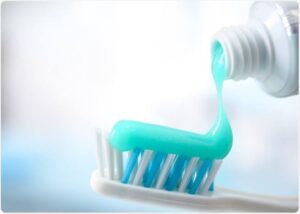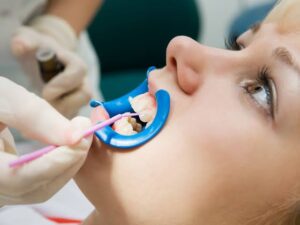
Once in a millennium, one comes across a landmark discovery, the ramifications of which span an entire century. A great forward stride in the field of public health was made with discovery of inverse correlation between dental caries prevalence and fluoride concentration in the drinking water. Various preventive measures and programmes using fluoride were implemented which resulted in a reduction in caries prevalence. It was established in 1940’s that the presence of fluoride in drinking water dramatically decreased the prevalence of dental caries. Although the mechanism of action was not clearly known, it was thought to be primarily systemic. It was suggested that the same effect might be achieved by topical application of fluoride to tooth surfaces.
A marked reduction in the prevalence of dental caries has been observed in parts of the western world during the last 15-20 years, both in countries using water fluoridation as a caries preventive measure and in countries with no water fluoridation. It is remarkable that caries reduction has occurred at the same time and in the same order of magnitude in areas as far apart as the Nordic countries on one hand and New Zealand and Australia on the other. Many countries have used fluoride in different forms for caries prevention. Some have used community water fluoridation programmes while others have used fluoride drops and tablets. Still in other countries, more emphasis has been given to topical fluoride application. However, one thing that has remained common to all these preventive measures is fluoride.

Fluoride has withstood the test of time and the trials of critics who would have it extracted like a diseased tooth. Fluoride is now an integral part of every oral health program.
Mechanism of Action :
A.Systemic fluoride:
Systemic fluorides play an important role in reducing the susceptibilty to caries. A number of mechanisms have been attributed to this. Some of these are described below.
1. Conversion of hydroxyapatite to fluoridated hydroxyapatite:
Dental enamel is a crystalline structure composed of hydroxyapatite crystals. The hydroxyl ion in the hydroxyapatite crystal is liable to isomorphous substitution by fluoride ion due to:
a) Similar charge (OH,F)
b) Higher affinity of F for calcium
c) Smaller size
The resultant crystal lattice has a more compact structure with a higher bond strength.
The fluoride ion replaces a hydroxyl ion and consequently renders the hydroxyapatite crystal more stable and more resistant to dissolution by acid. This has been proved by a number of studies in which fluoridated hydroxyapatite has been shown to be less soluble in-vitro as compared to hydroxyapatite alone.Hence teeth which acquire at high level of fluoride during development are supposed to have greater resistance to caries.
2. Increased rate of post eruptive maturation:
When a tooth erupts into the oral cavity there are certain areas of the tooth which are yet to be completely developed. Fluoride when present, increases the deposition of minerals in these areas. Both organic material and inorganic mineral ions are deposited onto the enamel surface which make it more resistant to acid attack
3. Interference with microbial activity : Fluoride or hydrofluoric acid is capable of interfering with bacterial metabolism and growth. When the fluoride concentration within a bacterial cell reaches a certain level, it becomes bactericidal. In lower concentrations, fluoride is bacteriostatic i.e. it reduces the growth of bacteria but does not kill them. The action of fluoride is mainly on the bacterial enzymes. This is more so when the environment is acidic. At such a time more fluoride in the form of HF i.e. hydrofluoric acid diffuses into the cell which subsequently proves lethal. Bacterial enzyme enolase, potassium transport mechanisms and phosphatases are affected by fluoride.
4. Alteration of tooth morphology:
Teeth, which have developed under the influence of fluoride, have been reported to possess shallow fissures, less steep cuspal inclines and rounder cusps. Systemic fluorides are effective if present during the time of tooth formation and development. After that topical fluorides play a vital role in increasing the resistance of the tooth to decay. Fluoridated drinking water is considered to have additional beneficial effect because of prolonged contact with the tooth surface and consequently a topical mode of action along with systemic action.
B. Topical fluoride:

Earlier it was thought that fluorides were primarily systemic in action regarding their anti-caries effects. This was the result of the numerous studies, which showed that the intake of 1 mg fluoride per litre of drinking water leads to a substantial reduction in dental caries. Incorporation of fluoride during enamel development causes a major difference in caries resistance However, recent studies have shown that fluoride incorporation into the crystals pre- eruptively does not inherently affect the reactivity of the enamel crystals. Synthetic apatites containing fluoride in concentrations upto 1000 ppm did not have dissolution rates significantly different from non-fluoride containing carbonated apatite.
Today, the prevailing concept is that firmly incorporated fluoride is of much lesser importance in caries resistance. It is the post-eruptive effect of fluoride that is mainly responsible for its action against tooth decay. The topical effects of fluoride thus are stressed upon. This can be explained as follows:
Dental caries is a process of pH cycling i.e. a process wherein alternate pH drops and rises occur due to acid production by microorganisms from fermentable carbohydrates and the subsequent buffering by the local protective mechanisms. Dissolution of tooth mineral i.e. leaching out of calcium and phosphate ions from the tooth structure initiates this process.
Fluoride can be available through, drinking water, products that are professionally applied or are available for home use and through consumption of various foods and drinks.
Enamel. plaque and saliva act as sources of fluoride. Fluoride present in whole saliva ranges from 0.01 to 0.05 ppm. If fluoride application has been carried out then concentration of fluoride in saliva could be very high even hours later.
Saliva is separated from the tooth surface by a layer of plaque. This serves as a very important source of fluoride because it can concentrate fluoride to very high levels . When the pH drops, this fluoride is released and it combines with hydrogen ions to form HF, which diffuses into enamel.
Fluoride can be weakly or strongly adsorbed onto the tooth surface. If present on the tooth surface it is released during an acid challenge. Even low concentration i.e. 0.1 ppm fluoride is sufficient to encourage crystal growth. These crystals are larger and deposition occurs at a faster rate in the presence of fluoride. More importantly the deposition occurs in form of fluoridated hydroxyapatite. Hence, it is the presence of fluoride in the aqueous phase in the oral fluids that is very important. This can occur when fluoride is applied frequently to the tooth surface at concentrations low enough to diffuse into enamel or through the use of high fluoride containing products which result in the formation of calcium fluoride.
The formation of calcium fluoride was considered a drawback because of its high solubility in water as demonstrated in some in-vitro experiments. But this situation is not replicated in-vivo. In the oral cavity, calcium fluoride has been found to be retained for a much longer period of time. This is because of the presence of a phosphate-protein- rich protective layer on the calcium fluoride globules. Furthermore, this product gets converted to fluorapatite under cariogenic challenges.
Forms of Fluoride:
Fluorides in dentistry have been used in two forms-
A) Systemic
B) Topical
A) Systemic fluorides:
Community water fluoridation:
Fluoridation is defined as ‘the controlled addition of a fluoride compound to a public water supply in order to raise the fluoride concentration to a predetermined level for the purpose of prevention of dental caries’.
It is the controlled adjustment of fluoride in a community water supply. The first studies linking fluoride content of drinking water with reduced caries prevalence appeared in 1930s and since then voluminous research has been carried out on this aspect.
Water fluoridation has been endorsed by organisations such as the Federation Dentaire Internationale, International Association for Dental Research and World Health Organization.
Water fluoridation requires:
*A suitable equipment in a treatment plant pumping station.
*A constant supply of suitable fluoride.
*Workers in the water treatment plant able to maintain the system and keep adequate records.
*Sufficient finances for initial installation and running costs.
B.Topicorides:
They act by inhibiting demineralization and promoting remineralization at the tooth to oral fluids interface.
Saliva is normally supersaturated with respect to teeth mineral but during an acid attack, calcium and phosphate from the tooth leach out leading to net mineral loss (due to fall in pH). Fluorides when present, inhibit this process and promote remineralization by causing fluorapatite formation and precipitation of hydroxyapatite crystals, larger in size than the original.
Indications of topical fluorides:
*High caries activity
*Patients receiving radiation to the head and neck
*Patients who are mentally or physically challenged
*Patients undergoing orthodontic, periodontal or restorative treatment
Topical fluorides can be:
1.Used at home
a) Fluoride dentifrices
b)Fluoride mouth rinses
2.Professionally applied
a) Fluoride solutions
b)Fluoride varnishes
c)Fluoride gels
3. Others
a) Fluoridated toothpicks and dental floss
b) Fluoridated chewing gums
c) Salivary substitutes containing fluoride